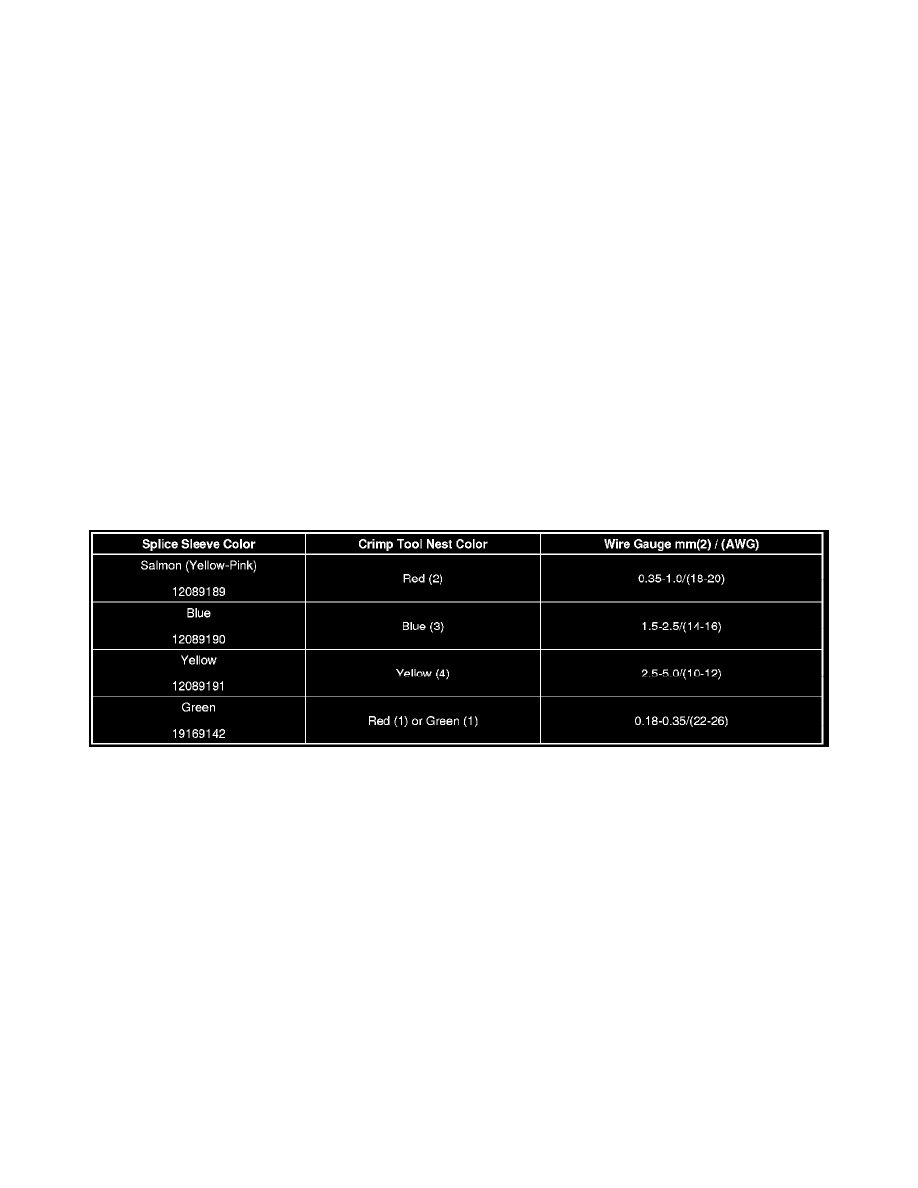Sierra 2500 Denali 2WD V8-6.0L (2011)

the DuraSeal splice sleeves and EL-38125-10 - tool. For wiring repair, refer to Splicing Copper Wire Using Splice Sleeves (See: Testing and
Inspection/Component Tests and General Diagnostics/General Electrical Diagnostic Procedures/Wiring Repairs/Splicing Copper Wire Using Splice
Sleeves).
For connector position assurance (CPA), refer to Connector Position Assurance Locks (See: Testing and Inspection/Component Tests and General
Diagnostics/General Electrical Diagnostic Procedures/Connector Repairs/Connector Position Assurance Locks).
For terminal position assurance (TPA), refer to Terminal Position Assurance Locks (See: Testing and Inspection/Component Tests and General
Diagnostics/General Electrical Diagnostic Procedures/Connector Repairs/Terminal Position Assurance Locks).
Splicing Copper Wire Using Splice Sleeves
Splicing Copper Wire Using Splice Sleeves
Danger: In order to reduce the risk of personal injury, loss of high voltage isolation to ground and higher system impedance, do not attempt to
repair any HV wiring, connector, or terminal that is damaged. High voltage coaxial type cables are not repairable. Never attempt to repair a
coaxial type cable. The entire cable/harness or component must be replaced. In order to maintain system integrity and personal safety, never
attempt to repair any high voltage wiring, cables, or terminals. Performing this procedure on high voltage circuits may result in serious injury
or death.
Note: Use only DuraSeal splice sleeves. Other splice sleeves may not protect the splice from moisture or provide a good electrical connection.
Special Tools
J-38125 Terminal Repair Kit
Use DuraSeal splice sleeves to form a one-to-one splice on all types of insulation except Tefzel and coaxial. Use DuraSeal splice sleeves where there are
special requirements such as moisture sealing. Follow the instructions below in order to splice copper wire using DuraSeal splice sleeves.
Note: You must perform the following procedures in the listed order. Repeat the procedure if any wire strands are damaged. You must obtain a
clean strip with all of the wire strands intact.
1. Open the harness by removing any tape:
*
Use a sewing seam ripper, available from sewing supply stores, in order to cut open the harness in order to avoid wire insulation damage.
*
Use the DuraSeal splice sleeves on all types of insulation except tefzel and coaxial.
*
Do not use the crimp and DuraSeal splice sleeve to form a splice with more than 2 wires coming together.
2. Cut as little wire off the harness as possible. You may need the extra length of wire in order to change the location of a splice.
Adjust splice locations so that each splice is at least 40 mm (1.5 in) away from the other splices, harness branches, or connectors.
3. Strip the insulation:
*
When adding a length of wire to the existing harness, use the same size wire as the original wire.
*
Perform one of the following items in order to find the correct wire size:
-
Find the wire on the schematic and convert the metric size to the equivalent AWG size.
-
Use an AWG wire gauge.
-
If you are unsure of the wire size, begin with the largest opening in the wire stripper and work down until achieving a clean strip of the
insulation.
*
Strip approximately 7.5 mm (0.313 in) of insulation from each wire to be spliced.
